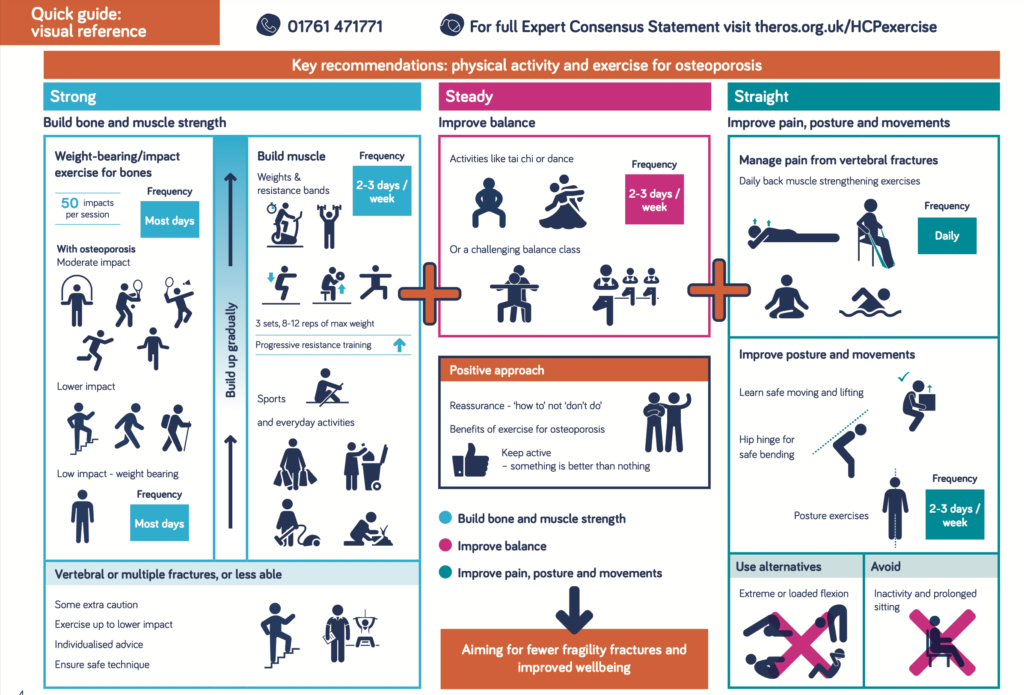Exercise after your menopause
Half of all women get joint pain during and after the menopause, and your bones can get thinner, putting you at higher risk of broken bones.
The good news is that the right kind of exercise in the right amount can:
- Protect your bones
- Make your joints more comfortable
- Reduce your risk of heart disease, obesity and depression
- Even reduce your experience of hot flushes, etc!
Exercise can be divided up into:
Weight-bearing exercise:
– Low impact weight-bearing activity such as walking, Tai Chi, and yoga
– High impact weight-bearing activity such as jogging
Resistance and Strength Training Exercise:
– Examples include weight lifting, swimming, cycling
Resistance exercise is the exercise which encourages our bones to get stronger. To get the best results, a combination of exercises that include both resistance and weight-bearing exercises is the best choice to keep your body strong and doing all the things you want it to do! Regular and gradual exercise that makes you breathless (aerobic exercise) reduces your risk of heart disease, can lower your blood pressure and even reduce your cholesterol.
Aquatic Therapy
Exercise in the water reduces the pressure on your muscles and joints. Aquatic therapy can be a good alternative for women who experience pain due to stress on joints.
Benefits of Aquatic Therapy
· The bouncy effect protects joints from the stress of exercise that in turn relieves joint pain from conditions like arthritis.
· Improves your circulation and reduces swelling.
· Provides a comfortable environment for strengthening exercise programs
· Improves how your heart and lungs function
· Can help to improve balance.
So what EXACTLY should I be aiming to do?
Try this helpful guide from the wonderful Royal Osteoporosis Society that tell you how to keep STRONG, STEADY and STRAIGHT!

